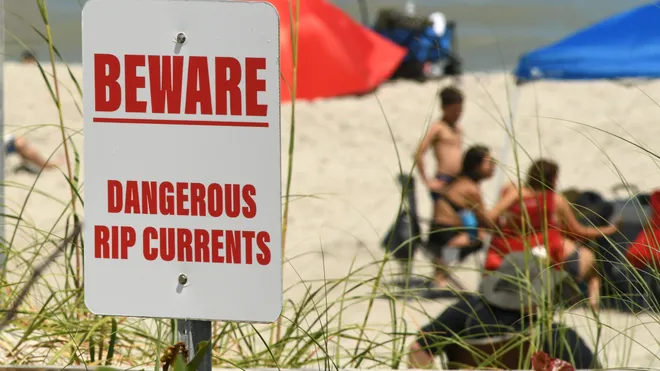Over the past week, more than 160 swimmers were rescued from rip currents along North Carolina’s beaches. The National Weather Service (NWS) in Wilmington reported that from June 18-22, a total of 164 rescues occurred in New Hanover County, with 95 of these taking place at Carolina Beach alone.
Surge in Rip Current Rescues
The increase in rip current rescues has been attributed to an east-southeast swell combined with the effects of the full moon, which significantly heightened the strength and frequency of these dangerous currents. Despite the end of the weekend, the NWS continues to warn beachgoers of moderate to high rip current risks along the coast from New Hanover to Pender and from Coastal Onslow to Shackleford Banks.

The NWS emphasizes the importance of remaining vigilant as people flock to the beaches during the summer months. The surge in rescues underscores the potentially deadly nature of rip currents, which have claimed several lives this season. On June 20, a couple drowned at Stuart Beach on Hutchinson Island, Florida, and within 48 hours, four people died in Panama City, Florida, due to rip currents.
Understanding and Identifying Rip Currents
A rip current is a powerful, narrow channel of fast-moving water that can pull swimmers away from the shore. According to the National Oceanic and Atmospheric Administration (NOAA), rip currents typically form when waves break near the shoreline, accumulating water between the waves and the beach. This water can return to the sea through a rip current, which flows perpendicular to the shore. Rip currents can vary in width from 10-20 feet to much wider stretches.
Rip currents are often found at low spots or breaks in sandbars and can occur at any beach with breaking waves. To spot a rip current, look for the following signs:
- A channel of churning, choppy water
- A noticeable difference in watercolor
- A line of foam, seaweed, or debris moving steadily seaward
- A break in the incoming wave pattern
Safety Tips for Navigating Rip Currents
Being caught in a rip current can be frightening, but knowing how to respond can save your life. Here are some essential safety tips if you find yourself in a rip current:
- Stay Calm: Remember that rip currents pull you out to sea but do not drag you under.
- Swim Parallel to the Shore: Instead of fighting the current, swim parallel to the beach until you are out of the current’s pull.
- Float or Tread Water: If you cannot swim out of the current, float or tread water until you are rescued or can swim to shore.
- Signal for Help: Draw attention to yourself by waving your arms and yelling for help.
If you see someone else caught in a rip current, do not attempt to rescue them without a flotation device. Instead, alert a lifeguard, call 911, or throw something that floats to the person.

Rip currents are a significant hazard during beach season, but with awareness and proper precautions, swimmers can enjoy the ocean safely. The recent surge in rescues at North Carolina beaches serves as a reminder of the ocean’s power and the importance of respecting it.
